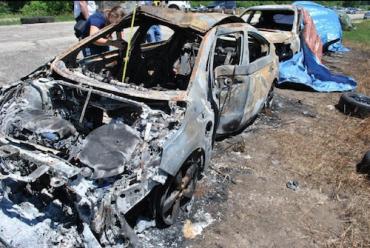Mitt Romney wrote an op-ed in 2008 titled “Let Detroit Go Bankrupt.” Barack Obama has used that title to suggest that Romney didn’t care about the auto industry while Obama heroically saved it.
The truth is very nearly the opposite. Although both Romney and Obama’s plans entailed government funding of the bankruptcy reorganization process and warrant backstops, there were salient differences which point out how Obama was primarily concerned with saving his union buddies while Romney was looking toward long-term solvency for the automakers.
A little background helps clarifies exactly what happened. GM and Chrysler had been losing market share and jobs for decades before 2008, largely due to bad management and greedy unions. When the credit crunch occurred in 2008, the global economy collapsed. The leaders of GM, Chrysler, and the UAW insisted that “Bankruptcy was not an option.”
Why?
They were certain that if they had reputations for going bankrupt, no one would buy their cars. They were already in hock to the federal government; the Bush Administration had given them cash, but they still didn’t prepare contingency plans for bankruptcy.
Why again?
Because this way they could whine that unless the government bailed them out they wouldn’t be able to secure financing for a bankruptcy in time. They would have to liquidate their holdings and assets, and that would decimate the entire auto-manufacturing supply chain.
This manipulation by the auto industry was perfect for Obama; his task force pushed through the bailout that eliminated over 2,000 GM and Chrysler dealerships, which left tens of thousands of Americans unemployed, while the automakers didn’t see any appreciable benefit. And worse, Obama’s Treasury Department issued notices which let “New GM” acquire $45 billion in tax write-offs from “Old” GM, which clearly violated basic bankruptcy law. As a result, the government lost billions of dollars in tax revenue while Obama hid how much the actual bailout cost, and most repugnant, disproportionally benefited an unsecured creditor, the UAW, while secured creditors had to suffer in silence. The UAW, a key Democratic Party ally, gained $26 billion.
That was Obama’s path; paying of his union buddies while savaging workers and normal creditors.
Then there was Romney’s.
Romney called for a true bankruptcy reorganization, in which GM and Chrysler would not have lost tens of thousands of lost jobs and the government would not have lost billions of dollars in tax revenue, even if the government had provided full debtor-in-possession financing. If Romney’s plans had been implemented, GM and Chrysler would have had to compete in the normal way, they wouldn’t have had to cave in to the unions, and they could have dumped non-profitable divisions like GM’s Opel unit. The carmakers would have been forced to act responsibly, thus ensuring better business practices for the future.
Instead, Obama went for the quick fix for his union pals. But if the auto industry fails again, their unsound business practices may leave them running back to the feds again.

COMMENTS
Please let us know if you're having issues with commenting.